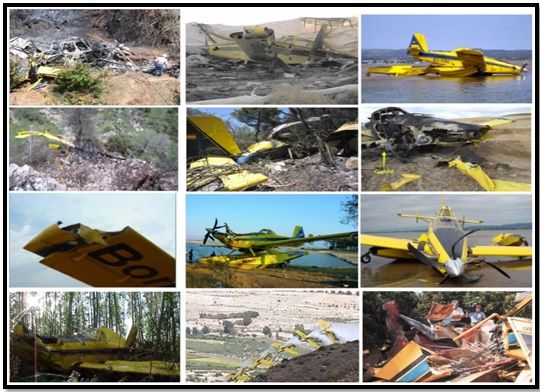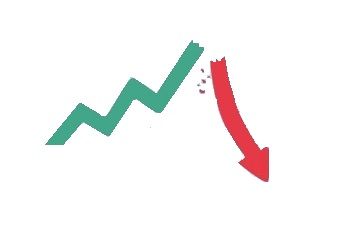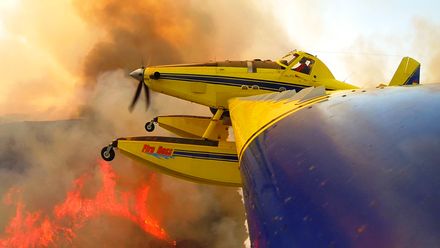Safely reach your goals with the Aerial Firefighting Mentor Program
What is Aerial Firefighting?
Aerial firefighters should be well-trained multitaskers who understand the terrain and the effects of weather in proximity to fires. They must master low-level flying techniques, often operating under a single-crew concept, and have a firm grasp of fire control strategies and tactics.
During a mission, we need to make hundreds of micro-decisions. There are no airways to follow, no autopilot, no set procedures for every phase of flight, and no colleague to assist with specific tasks. Each decision can have significant consequences, emphasizing the need for comprehensive training and situational awareness.
Challenging?
Yes. Historically, shortcuts and a lack of mentoring have claimed lives and caused catastrophic accidents. It is vital for pilots to be properly trained and supervised to ensure they are following safety protocols and standardized procedures.
The path
Providing air support to ground forces is extremely rewarding. It's an exciting and purposeful way to fly where our efforts are noticed. Through our mission, we benefit society, future generations, and the environment. Feeling relevant and having a sense of purpose is unbeatable!
In the right context, it can be a well-paid and stable position. However, while this may sound like a perfect scenario, getting there, doing it right, and staying safe is not an easy task.
Due to its specialized nature, this is not a step-up job into other forms of flying, nor is it a temporary solution. This is a career that requires a specific set of skills and a lot of sacrifices. The process demands quality training and long-term mentoring.
There is a path to success, and we know how to get there!
THE PROBLEM
Serious and fatal accidents continue to happen every fire season, everywhere.
It is a fact WE NEED TO ELIMINATE.
Throughout our investigation, we have connected every incident and accident to get to the root causes.
We have realized that while some organizations devote a good deal of time and attention to training and accident prevention, others may lack the necessary experience, knowledge, time, or resources.

Inherently Dangerous?
Aerial firefighting shouldn't be classified as dangerous because there are accidents.
That would be an oversimplified assumption.
The key is how we approach the activity and how much we allocate.
We know the quality and quantity of training, combined with controlled exposure levels, influence, modify, and individualize safety margins, reducing danger, and putting risks into perspective.
Here is a good example.
Zero Fatalities - Possible?
We firmly believe in a zero fatalities safety policy.
It does not matter how purposeful the activity is, or how profitable our organization is, if we cannot preserve our frontliners lives.
Money comes and go.
Life is irreplaceable.
Here is an inspiring example on how committing to zero fatality goal can positively impact your organization.
UNSUSTAINABLE GROWTH
Due to the fast-growing environment in which we live, organizations could become blinded by contract requirements.
FOMO (Fear of Missing Out) represents a modern organizational hazard within the aerial firefighting context and is ranked high in our hazard log.
Too much, too soon.
Don't fall prey to this effect.
Let's consider long-term sustainability and viability.

MISSION & VALUES
Making pilots and organizations safer by pushing and merging training boundaries
- We are not overexposed heroes. We are committed professionals.
- In addition to being carrier aerial firefighters and mentors, we are qualified instructors and examiners. We speak English, Spanish, Swedish, French, Italian, and German.
- Our mission is to manage risks, balance resources and make individuals and organizations navigate safety spaces.
Global sustainable and viable growth
- We place a great amount of intention to mitigate the consequences of a poorly handled short-term growth. "What does not benefit the hive, is no benefit to the bee" - Marcus Aurelius
Share our purpose and leave a safety legacy - For free
- Help pilots develop the skills, confidence, and knowledge to make informed decisions and handle any firefighting situation they may encounter.
- Guide pilots to stay ahead of the game and return home safely every day.
- We believe safety matter must be free to everyone
Assist with the Management Dilemma
❌ Too much production, and we crash, literally.
❌ Too much protection, and we might crash financially.
✅ The safety space lies between, and that is where we aim to be.
Effective leaders know how to jiggle resources to achieve sustainable long-term growth through safety spaces.
Leading effectively means delegating, finding synergies, and putting the right people in the right seats.
Initiating external audits, establishing interdependence rather than independence, and cultivating relationships based on trust. It's what we do best and what we like to promote.
We believe that by providing the
highest quality services in the areas we master, and
being honest when we can't fulfill a specific task, our customers will be more satisfied and loyal.
OUR APPROACH
Mentoring through quality content and deliberate practice
While racking up hundreds of unstructured solo flights will help pilots learn a few things about the aircraft and its operation, it will not necessarily put us on the path to high-level piloting.
And if we do not reach a high-level of piloting, we won't be effective aerial firefighters and our chances of survival decrease.
This business can be unforgiving.
Average is not enough.
We believe that the quality of the training can be as important as the quantity of the training.
The number of hours you have amassed is not as significant as what you did on those hours.
Whether you just came out of an ab initio school and need to make sure you are on the right track, you are a consolidated aerial firefighter looking to improve your safety margins, or an organization seeking to elevate internal standards, we might be able to help.
The Mentor role
- A trainer is a person who teaches a particular skill or type of behavior through sustained practice and instruction.
- Flight instructors are clearly trainers, and their aim is to give students proper instruction and sufficient practice so that they can fly the aircraft proficiently and safely.
- The mentor role reaches beyond by connecting all the dots in the long run.
Long-term guidance
We expect a mentor to consider safety not only as a specific course progresses, but also to determine when a pilot or an organization is competent enough to act alone or to move on to the next training phase.
The responsibilities are therefore large, but what about the rewards?
Mentoring others offers opportunities for much broader recompense. For example, the personal satisfaction of contributing to raising industry safety standards, setting an example, and leaving a positive legacy for future generations.
BENEFITS
In this fast-changing industry, pilots and managers come and go.
We're here to stay.
You can rely on us as an external benchmark to measure your safety and performance during the long haul.
- In the past, we have interacted with most organizations.
- In our knowledge, we know which standards are available, and what is the most convenient path for an individual or organization.
Before taking the leap, make sure to understand what you're getting into.
Failure to perform due diligence could put lives at risk, as well as your organization's reputation and viability.
There are no replacements for life, and too many families have been destroyed far too early in accidents that could have been avoided.
Don't carry that weight by being a silent party during catastrophic accidents.
It applies to everyone, regardless of whether they are the CEO of their organization, a fire agency new to a certain brand, or a pilot trying to become an aerial firefighter.
SURVIVAL
We have seen promising projects and ideas falling apart when not investing enough before starting a new activity or sticking to obsolete paradigms.
"We know what we do, we have been doing this for decades"
That does not resonate with us. We like to stay ahead of the curve to better serve our community of pilots and the industry we belong to.
We value experience and expertise, but we constantly embrace changes and strive to be fast and flexible.
Make sure to survive the environment you are heading to:
- Don't put your life in someone else's hands without knowing what you are getting into.
- Measure safety performance against an external, unbiased benchmark.
- In addition to joining forces with organizations with acceptable standards, set your own, unnegotiable safety standards.
- Take responsibility for your safety and the safety of your organization.
- Enjoy the journey, feeling accompanied.
- Be in control of your career or organization.
"Mastering a tail wheel aircraft before undergoing the hiring process gave me the skills and confidence to perform well and be hired."
— Fernando Llabona -
New Aerial Firefighter
Like the Lusitania itself 100 years ago today our bird has crossed the Atlantic Ocean safely (Cape Verde - Brazil), an odyssey for the Pilot who must manage his mind impeccably for this great challenge. Well done to the Aerial Firefighting Mentor team for making it happen in a safe and timely manner! 🗺️🌍✈️💦🔥🌲
Éder is the great example of "Suhu". He knows everything, he can do anything from piloting, managing, even being a sky diver, one of his specialities! What surprising me most is, even if we haven't met each other before, he served the mission we run together with wholeheartedly, solving problems along the way, and even making an HF antenna attachment with limited resources"
You ROCK!
Not only the flight is important, the theoretical part and understanding what is going to be practiced after is essential to fully acquire the desired techniques. The tailwheel theory / flight skills camp on the Savage Cub was a confidence booster prior to the class rating on the actual Aerial Firefighting aircraft. Thanks for putting it together!
Want to know more?
Follow us to stay tuned







